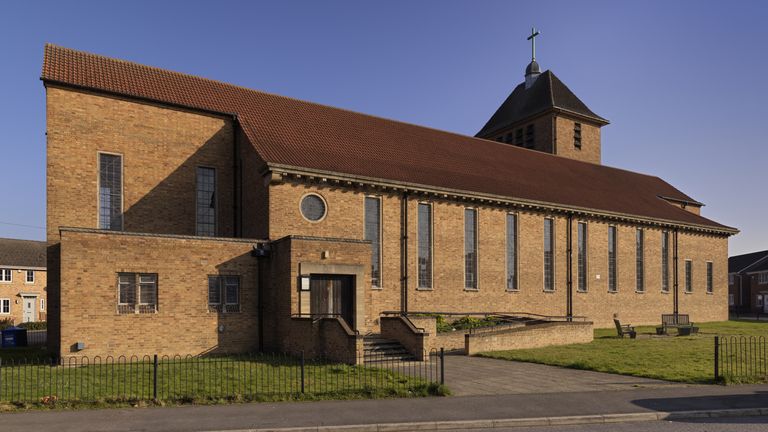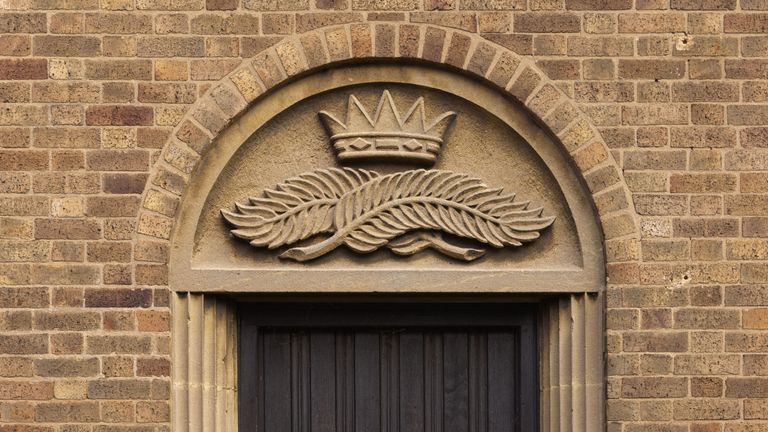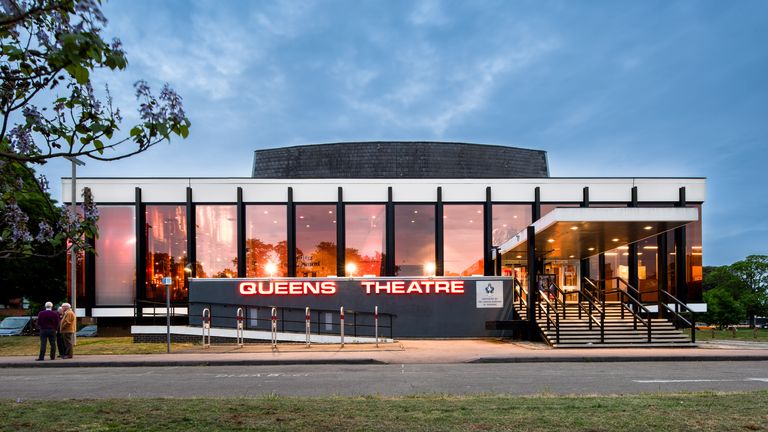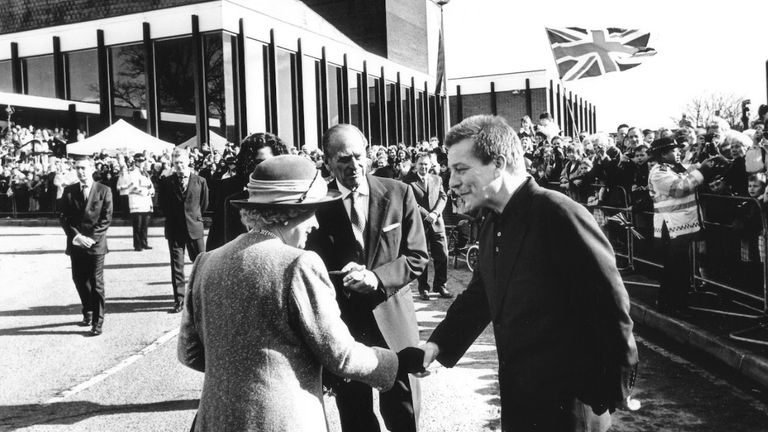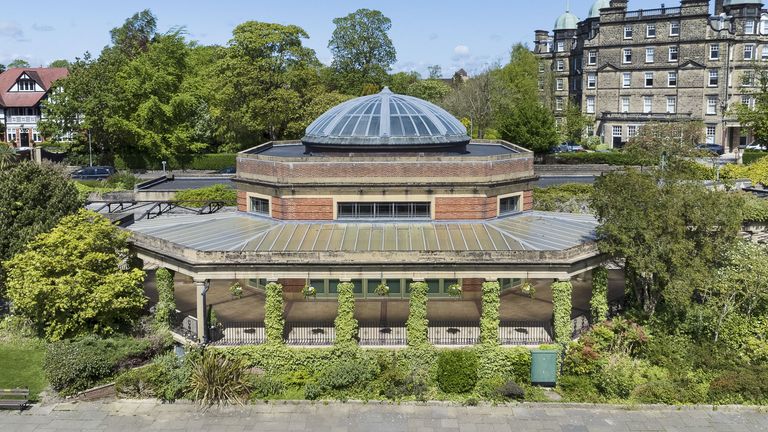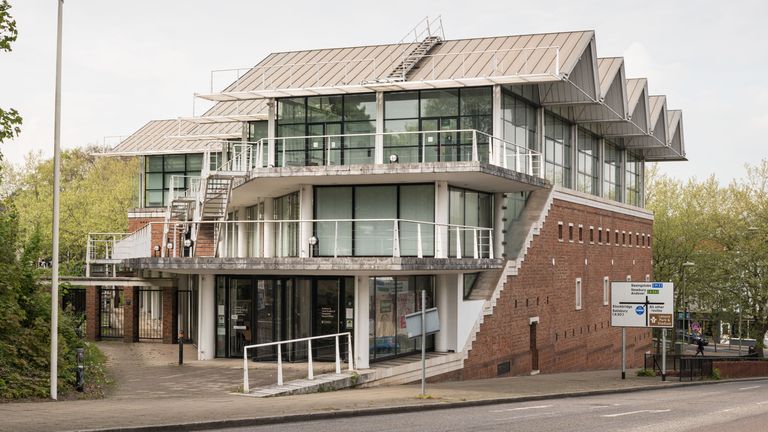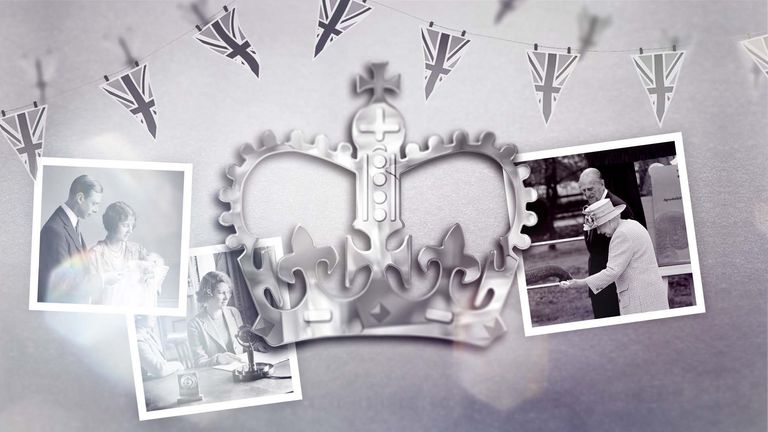[ad_1]
Six historic sites visited by the Queen have been given protected status to celebrate the Platinum Jubilee.
A church in Birmingham, a Modernist theatre in London and a 1930s pavilion in Yorkshire are among the structures in England that have been listed by the Department for Digital, Culture, Media and Sport (DCMS).
The selections were made based on advice from Historic England and are intended to reflect the social, technical and cultural changes that have taken place during the last 70 years of Her Majesty’s reign.
The Queen travelled to the sites as part of royal tours of English cities, often with the Duke of Edinburgh by her side.
The church chosen in Birmingham – All Saints Church in Shard End – was erected after WWII.
It was named after a church on Cooksey Road, Small Heath that had been destroyed by German bombs during the conflict.
The construction of the site was paid for by the War Damage Commission in 1954.
The Queen’s Theatre in Hornchurch, London, is also being listed.
The Modernist venue opened in 1975, its design influenced by Ludwig Mies van der Rohe, a well-known German architect.
In Harrogate, North Yorkshire, Art Deco Sun Pavilion and Colonnade is being listed.
The site was built in 1933 to give the public a place to relax after exercising or using the spa in the town centre.
The classical structure deteriorated in the 1980s but was restored following a campaign spearheaded by local resident Anne Smith, with support from celebrities like James Herriot.
It was officially reopened by the Queen in 1998.
The newest building to be given protection for the Jubilee is the Hampshire Archives in Winchester, which was completed in 1993.
The unusual structure was opened by the Queen and Prince Philip, who commented on how the building looked like a cruise liner.
Local brick was used within its walls as a tribute to the surrounding Winchester Conservation Area and the remains of a medieval city wall close by.
In Stroud, Gloucestershire, the 19th-century Imperial Hotel was selected due to its impressive stone masonry formed from local limestone.
The Queen visited the structure, which was inspired by the Cotswold market halls and continental colonnades, after its refurbishment in 1950.
Commemorative motorway markers on the M62, which was opened by Her Majesty in 1971, are also being listed.
The road spans Yorkshire and Lancashire, running through the Pennines and reaching a peak of 372m above sea level, making it the country’s highest motorway.
Two plaques with the historic symbols of the Red Rose of the House of Lancaster and the White Rose of the House of York are at each end of the road.
Duncan Wilson, chief executive of Historic England, said: “These new listings celebrate the diversity and richness of our heritage overseen by Her Majesty during her 70-year reign, showing how the fabric of the nation has changed and developed.
Read more: Platinum Jubilee: Eight new cities named as part of the celebrations
“These sites cover the length and breadth of the country – from All Saints’ Church near Birmingham, which she opened in 1955 when she was newly crowned, to the high-tech Hampshire Public Records Office, completed in 1993.”
Heritage minister Nigel Huddleston added that the listings were “a fitting way to pay tribute to the longevity of her service”.
“These historic sites provide a fantastic opportunity to reflect on how much life in the UK has changed during Her Majesty the Queen’s 70-year reign,” he added.
[ad_2]


